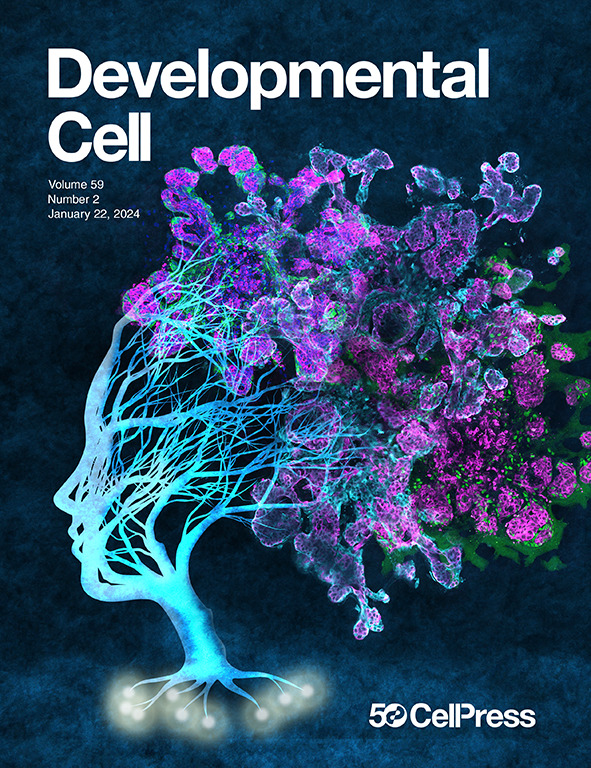TM9SF3 is a Golgi-resident ATG8-binding protein essential for Golgi-selective autophagy
IF 8.7
1区 生物学
Q1 CELL BIOLOGY
引用次数: 0
Abstract
Golgi degradation by selective autophagy (Golgiphagy) requires receptors to direct Golgi fragments into phagophores for sequestration within autophagosomes, followed by lysosomal degradation. Here, we show that the human Golgi transmembrane protein TM9SF3 is a receptor essential for Golgiphagy under nutrient-stress and multiple Golgi-stress conditions. TM9SF3 binds all six mammalian ATG8 proteins through its N-terminal LC3-interacting regions. In U2OS cells, TM9SF3 knockout blocks nutrient-stress-induced Golgi fragmentation and reduces the targeting of Golgi fragments to autophagosomes, resulting in decreased Golgi protein degradation. Beyond nutrient stress, TM9SF3 is required for Golgiphagy induced by monensin, brefeldin A, and disruptions in intra-Golgi protein glycosylation. Knockout of TM9SF3 and mutations in its LC3-interacting regions (LIRs) both compromise protein glycosylation, whereas TM9SF3 overexpression promotes degradation of incompletely glycosylated proteins. Further, we show that TM9SF3 is required for human breast cancer cell proliferation, and high TM9SF3 levels are associated with poor prognosis, implicating its function in breast cancer pathology.

TM9SF3是高尔基选择性自噬所必需的高尔基驻地atg8结合蛋白
选择性自噬的高尔基体降解(Golgiphagy)需要受体引导高尔基体片段进入吞噬体,在自噬体内隔离,然后溶酶体降解。在这里,我们发现人类高尔基跨膜蛋白TM9SF3是营养胁迫和多种高尔基胁迫条件下高尔基吞噬所必需的受体。TM9SF3通过其n端lc3相互作用区域结合所有六种哺乳动物ATG8蛋白。在U2OS细胞中,TM9SF3敲除阻断营养应激诱导的高尔基体片段,减少高尔基体片段对自噬体的靶向,导致高尔基蛋白降解减少。除了营养胁迫,TM9SF3也是由莫能菌素、brefeldin A诱导的高尔基蛋白吞噬和高尔基蛋白糖基化破坏所必需的。敲除TM9SF3及其lc3相互作用区(LIRs)的突变都会损害蛋白的糖基化,而TM9SF3过表达则会促进不完全糖基化蛋白的降解。此外,我们发现TM9SF3是人类乳腺癌细胞增殖所必需的,高水平的TM9SF3与不良预后相关,暗示其在乳腺癌病理中的功能。
本文章由计算机程序翻译,如有差异,请以英文原文为准。
求助全文
约1分钟内获得全文
求助全文
来源期刊

Developmental cell
生物-发育生物学
CiteScore
18.90
自引率
1.70%
发文量
203
审稿时长
3-6 weeks
期刊介绍:
Developmental Cell, established in 2001, is a comprehensive journal that explores a wide range of topics in cell and developmental biology. Our publication encompasses work across various disciplines within biology, with a particular emphasis on investigating the intersections between cell biology, developmental biology, and other related fields. Our primary objective is to present research conducted through a cell biological perspective, addressing the essential mechanisms governing cell function, cellular interactions, and responses to the environment. Moreover, we focus on understanding the collective behavior of cells, culminating in the formation of tissues, organs, and whole organisms, while also investigating the consequences of any malfunctions in these intricate processes.
 求助内容:
求助内容: 应助结果提醒方式:
应助结果提醒方式:


